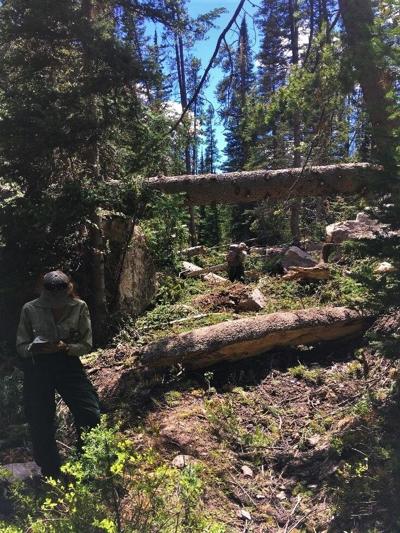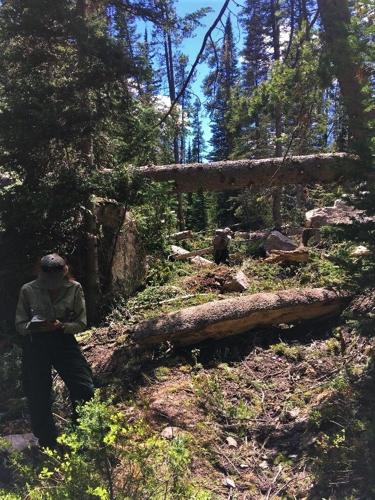An unusual spike in earthquake activity in central Idaho over the last several weeks is being studied by scientists to gain insight into the location of fault lines and the occurrence of seismic activity in the region.
The most recent major activity was on Sunday at 11:04 a.m., when a 4.3-magnitude earthquake was measured 25 kilometers east of Clayton.
Sunday's quake followed a 4.0-magnitude quake on June 3 at 1:30 a.m. that was centered about 1.5 kilometers northwest of Stanley and followed by a "swarm" of smaller shocks.
Idaho Geological Survey State Geologist Claudio Berti said the earthquake swarm near Stanley around June 3 generated “much more” seismic activity than usual for the area.
“Which is the reason why we are interested in it,” Berti said. “Some say that releasing energy is good. Every time there is an earthquake a bunch of energy dissipates and therefore doesn’t build up in preparation for a big one. At the same time, as faults move, other nearby structures may load up and eventually fail.”
Berti said a similar swarm of earthquake activity occurred around Sandpoint in 2015.
Berti said the more recent Clayton earthquake occurred on a different fault line than the one near Stanley.
“The area is littered with faults, whose current state of activity is really not well known," Berti said.
Berti said it is hard to say if the seismic activity on the multiple fault lines is “directly related."
“Certainly all the active faults in the region—and there are plenty of those—respond to a common regional stress field,” he said.
Berti said earthquake measurements and data analysis in the region increased following a 6.5-magnitude earthquake that occurred in the Stanley area in 2020 that caused rockslides in the Sawtooth Mountains and caused a portion of Stanley Lake's beachfront to collapse.
The 2020 Stanley earthquake was the second largest earthquake ever recorded in Idaho. The strongest on record was a 6.9-magnitude quake near Borah Peak in the Lost River Range in 1983 that left a lasting scar across the foothills, according to the Idaho Geological Survey.
Berti said after the 2020 Stanley earthquake the Idaho Geological Survey started to build up a network of seismometers, which, among many things, record earthquakes and allow scientists to locate them with some accuracy.
“The more instruments the better,” said Berti. He said they are used to better understand the mechanics and kinematics of the faults, and “illuminate” the buried fault plane geometry “by interpolating among the many aftershocks, which are assumed to all be part of the same fault plane.”
Berti said the state of Idaho didn’t have an “official, state operated” seismic network until September 2022, when the Idaho Geological Survey deployed the first instrument.
“It took a couple years to come up with the funding, and still all funds for this are not appropriated by the state but IGS comes up with it through grants and salary savings,” Berti said.
Berti said because of the early June seismic swarm in Stanley, his team deployed two additional seismometers in the area.
“This will increase accuracy in locating earthquakes in the subsurface,” he said. “For example, our vertical accuracy, usually the largest uncertainty, just went from plus or minus 2 miles, if lucky, to [within] about 1,700 feet.”
“People should always remember that many areas in Idaho are under seismic hazard,” Berti said. “We tend to forget this until an event happens, and then four months later we go back to business as usual."
Berti said communities like Stanley, Mackay, Challis “or Boise for that matter” have various degrees of seismic hazard.
“Coexistence with these natural phenomena is key, and preparedness is the most important thing,” Berti said.
At the same time, he said, people should also not panic and should try to find sources of information they trust.
“And, no, Yellowstone [a dormant super-volcano] is not going to open a vent in central Idaho,” he said.
For more information on Idaho seismic activity, visit the Idaho Geological Survey website at idahogeology.org








![Travis McDaniel[22]](https://bloximages.chicago2.vip.townnews.com/mtexpress.com/content/tncms/assets/v3/editorial/8/25/825f6f02-175c-4dcc-897d-9b9d781e3089/685448b3289d7.image.jpg?crop=630%2C630%2C0%2C19&resize=150%2C150&order=crop%2Cresize)






Post a comment as anonymous
Report
Watch this discussion.
(1) comment
Bring on the next big one, I could use a new condo out of it. Just bring the epicenter a little farther south this time.
Welcome to the discussion.
Log In